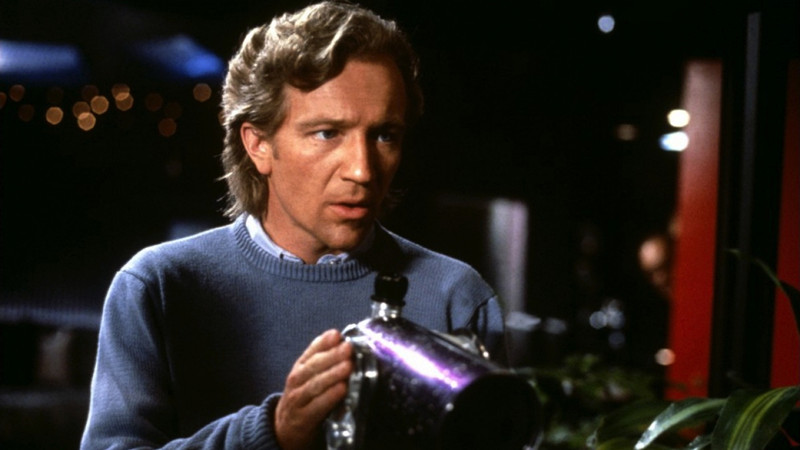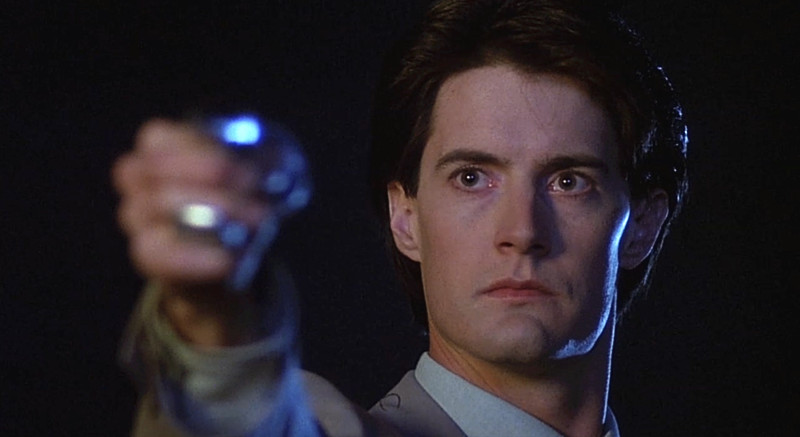6. Sleepaway Camp (1983)

Angela Baker (Felissa Rose) is bullied at summer camp. One-by-one, her abusers are violently murdered.
In the early-1980s, cinema was inundated with similar slasher movies. Sleepaway Camp proves to be one of the genre’s standout pieces, due to its substance. Akin to Friday the 13th (1980), Sleepaway Camp addresses bullying and its upsetting ramifications. Its effect provokes introspection in the audience, forcing them to evaluate how they treat others and experience first-hand the long-lasting effects of abuse. At its climax, Sleepaway Camp contains one of film history’s most shocking twists, outdoing the work of M. Night Shyamalan.
7. Body Double (1984)

After witnessing a woman being abused through a telescope, actor Jake Scully (Craig Wasson) becomes embroiled in a murder case.
Body Double is comprised of epic, dreamlike, Hitchcock-inspired set pieces. Ambitious scenes such as when Jake spies on Gloria in a department store echo Rear Window (1954) and Vertigo (1958). These themes of voyeurism and the male gaze are exacerbated by the recurrence of telescopes, cameras and mirrors. However, whilst paying homage to his hero, De Palma subverts the audience’s expectations of a thriller, such as in the infamous drill through the ceiling scene. Body Double is a movie that is deliberately self-conscious of cinema’s artifice, examining appearance and reality.
Its most revolutionary scene is a single take tracking shot, to the song Relax by Frankie Goes to Hollywood, condensing 1980s fashion. It is a mise en abyme, where the emotions of the porno being shot matches the plot of the movie surrounding it, blurring reality. De Palma playfully toys with metatextuality, showing the camera in a mirror, ultimately offering a satire and critique of Hollywood. Furthermore, De Palma’s treatment of cinema’s superficiality would prove to be influential upon his most famous student: Quentin Tarantino.
8. The Hidden (1987)

In Los Angeles, an alien inhabits different human bodies to embark upon a crime spree.
With a strong, interesting premise, The Hidden remains one of the 1980s most underrated hidden gems. One of its assets is its originality, excelling in both the buddy cop and sci-fi genres. Unlike hard sci-fi, like the world-building of Star Wars (1977), The Hidden is ‘sci-fi lite,’ incorporating supernatural elements in a realistic, Earth-bound setting. The crisp direction and editing facilitates its stylish visuals and exhilarating action sequences.
These include: bank robberies, car chases, shootouts, flamethrowers, and bazookas, executed with pristine stunts. Earlier in the 1980s, the slew of slasher movies proved to be all too similar in plotting. The Hidden upends the slasher, making it more interesting and mysterious, by the killer having the ability to inhabit different bodies. Clearly cast for his work with David Lynch, Kyle MacLachlan’s performance expresses the movie’s tongue-in-cheek humour, foreshadowing his work in Twin Peaks (1990-1991).
9. Bird (1988)

A biopic of seminal bebop saxophonist Charlie Parker (Forest Whitaker).
The best thing about any Forest Whitaker movie is his masterclass acting. Bird is the ideal platform for Whitaker’s immense talent. His impassioned, breakout turn as Charlie Parker is brimming with intensity, tragedy, personality, sincerity and volatility. Whitaker deservedly received Cannes’ Best Actor Award for his work. Bird is further enhanced by Clint Eastwood’s direction.
With a tone of hopeless romance, Eastwood crafts period mise-en-scène and atmospheric noir lighting, underscoring the protagonist’s emotional experience. On one hand, Bird is an inspiring biopic, yet on the other, it is a cautionary tale about drug use and squandered talent. It is particularly recommendable to jazz fans, yet its value makes it enjoyable for those unfamiliar with the musical genre.
10. Who’s Harry Crumb? (1989)

Idiotic private detective Harry Crumb (John Candy) must solve the case of a missing daughter.
Although Who’s Harry Crumb? garnered negative reviews, it is worth watching for the legendary John Candy’s lead performance. Across his filmography, Candy not only made audiences laugh, but uplifted them with his warmhearted, loveable personality. In Who’s Harry Crumb?, his comedic talent is permitted to shine, through the dissonance between Crumb’s confidence and the reality of his clumsy mishaps.
As well as utilising slapstick, Candy delivers consistently hilarious one-liners. For instance, Crumb and a little girl view a large photograph of the missing daughter. The little girl says: “she’s perfect,” to which Crumb replies: “perfect? Yeah, I dunno. I mean, look at the size of her head. She must be enormous.”